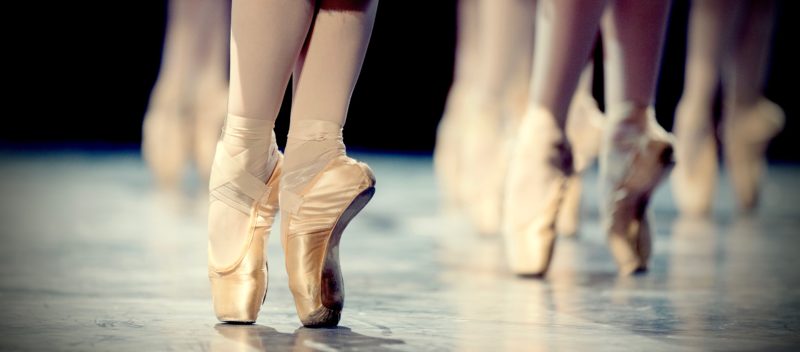Dance is hard on the body. The long hours of practice means a dancer’s muscles can be sore due to muscle fatigue.
However, it is important to know what is normal soreness, and what may be a sign that your dancer may be putting themselves at risk for injury. Being able to identify the type of pain your young dancer is feeling will help to make sure they are not continuing to practice when they should be evaluated by a medical provider.
How to Identify “Good” Versus “Bad” Dance Pain
Most dance injuries occur in the ankle, hips, knees or lower back, with the majority occurring in the feet or ankles. This is caused by the high demand placed on the body when you dance. Determining the difference between “good” and “bad” pain is vital in figuring out how to treat it.
“Bad” pain is the kind of pain that bothers you not only in dance class, but also outside of dance class in activities of daily life. It can be either sharp or achy and normally gets worse with activity. Most dance injuries happen gradually, and get worse over time. Occasionally, there may be an acute injury where swelling occurs with the pain that limits our ability to fully bend or straighten a body part. It may cause a dancer to limp. This would also be a reason to see a medical provider.
Main Causes of Injuries in Young Dancers
Overuse
You will often hear the term overuse used as a reason why a dancer is experiencing pain. This occurs when the amount of time spent dancing begins to exceed the body’s ability to recover. It is important to recognize the importance of rest and recovery within the dancer’s training, and realize that certain seasons in a dancer’s year may not always accommodate periods of rest as well as they ideally should.
This places the dancer at greater risk to experience an injury. It is important to realize that small changes in practice schedules can have a significant impact on helping recover from their demanding schedule. A dance medicine specialist can offer many suggestions on rehearsal modifications to dance smarter, not harder, when they are injured.
Technique Flaw
A flaw in a dancer’s technique is another common contributor that may predispose a child to injury. Most technique flaws start with a dancer’s turnout position. This is the fundamental position that all dancers base their movement.
The motion generated during dance should come from the muscle support of a dancer’s hips, with their knees and ankles subsequently falling into place. Problems arise when a dancer tries to force their turnout. That means instead of relying on their hips to be in the proper position, they use the friction of the floor to turn their feet out — creating more force than their body is ready for. This puts extra stress on the knees and back and will eventually cause pain.
Growth Spurts
Many injuries happen when a dancer experiences a sudden acceleration in growth in their body, called a growth spurt. During this time of transition, a dancer may no longer be able to perform a move properly that they once were able to do with ease. They may not be as flexible as they once were, or may need to get stronger to help control their longer limbs.
This period of rapid growth normally lasts 18-24 months, and may place extra stress on open growth plates, which may sometimes result in pain. The adolescent growth spurt also tends to occur as dancers start to practice longer hours, which can compound the issue.
Our team, who has years of experience treating dancers and a history of high level dance themselves, offers both on-site and off-site dance medicine services to meet the needs of your dancers:
To schedule a dancer to be evaluated in our multidisciplinary Dance Clinic please call 513-803-HURT and request “Dance Clinic.” To schedule a pre-pointe evaluation, call 513-803-9607.






Good article and the information is useful. I would also add that going en pointe too soon and also ill-fitting pointe shoes cause many ankle, arch, and toe injuries. Overly ambitious parents thinking that putting a youngster en pointe before a teacher advises is a problem. Slow, mindful, age and level appropriate training in well fitted pointe shoes it the key to a healthy dancer.
Dancewithmarynyc – ballet and Pilates teacher and professional fitter